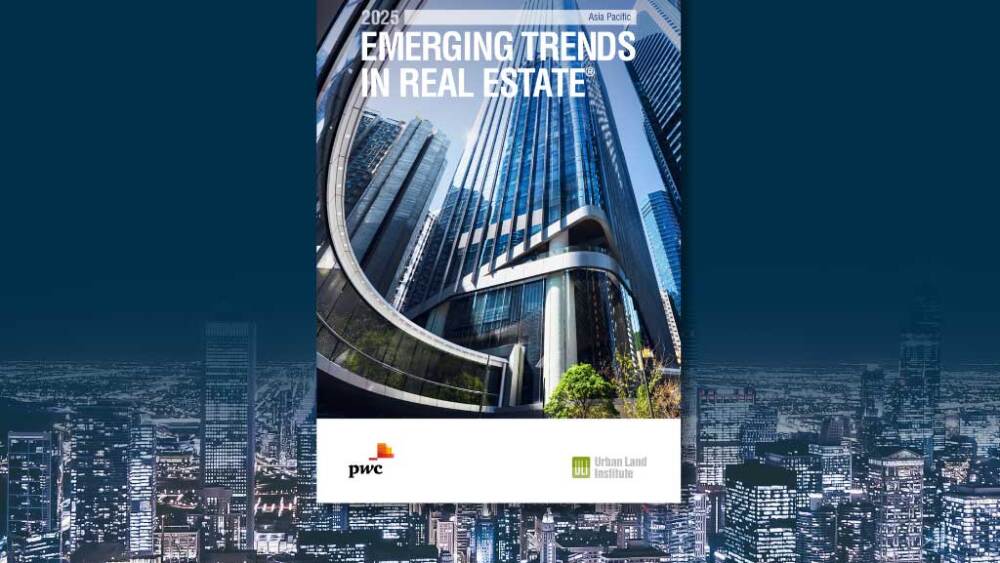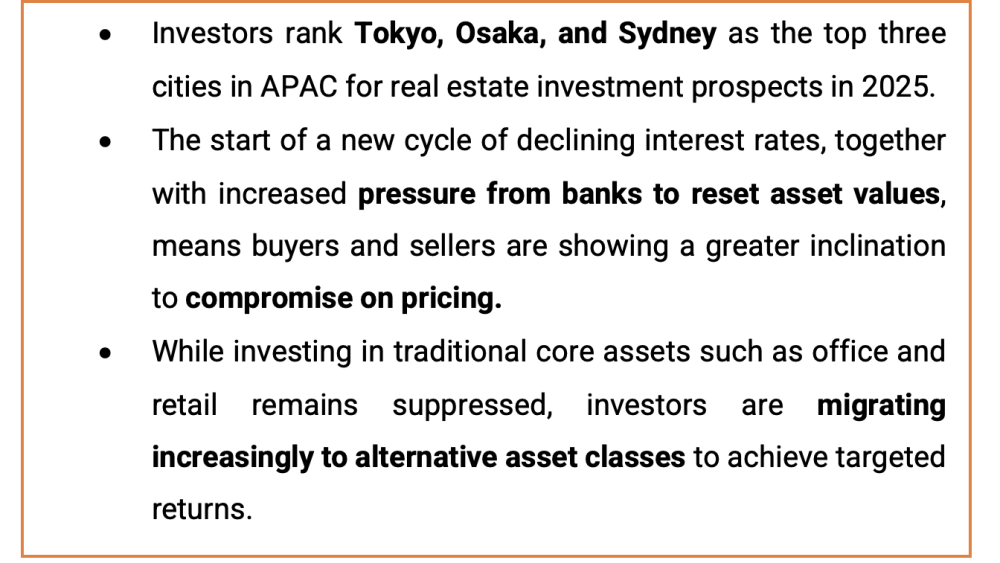According to the latest Emerging Trends in Real Estate® 2025 Asia Pacific report from ULI and PwC, the start of an interest rate easing cycle in the US has led to increasing signs that commercial real estate markets across Asia Pacific may be approaching a bottom, as investor sentiment improves, and Q3 data from MSCI indicates a sizeable deal pipeline for the fourth quarter.
Conducted in October, the Emerging Trends in Real Estate® survey ranked Tokyo (1), Osaka (2), Sydney (3) and Singapore (4) as the four cities with the best investment prospects for the region. But MSCI data and anecdotal reports reveal that market disparities are profoundly evident across both geographies and sectors in Asia Pacific.
Japan’s enduringly low interest rates continue to make it again an investor favourite, although interviewees suggested that the prospect of domestic rate hikes in 2025 has led to increasing caution among global investors in a market where cap rates have become tightly compressed.
Australia, on the other hand, is attracting increasing attention as local institutional funds lower asking prices, causing a market reset of some 20-25 percent in book valuations. Global funds that had been absent from core markets for the last three years are now back in the market looking for deals. Sydney, in particular, is showing signs of recovery, although Melbourne continues to suffer from high vacancies.
China remains in a multi-year downtrend, creating a unique property microclimate. Foreign capital remains reluctant to invest, given current economic conditions, although opportunities to acquire some stock at bargain prices exist for established foreign players.
This year’s report also suggests growing appetite for assets in emerging markets, notably in Southeast Asia and India, where migration of manufacturing capacity out of China is increasing demand for industrial and logistics assets.
Interviews with investors across the region also revealed that the continued mismatch in pricing expectations (wide bid/ask spreads) have led investors to pivot away from traditional property types as they seek out assets able to meet return thresholds. Alternative assets, which include new-economy themes with high growth prospects, include data centres and living sector assets such as multifamily residential and senior housing.
Alan Beebe, CEO, ULI Asia Pacific, said, “Our Emerging Trends in Real Estate® report this year indicates that several real estate markets across Asia Pacific are now on the cusp of revival. We are entering a period where both buyers and sellers should be motivated to make strategic concessions, whether they are managing inactive funds with mounting dry powder, or investment managers with time-limited funds under pressure to liquidate assets so that they can return capital to their own investors. This market recalibration can only materialize once we see a return to more normalized trading conditions and improved liquidity.
Stuart Porter, PwC Asia Pacific Real Estate Leader, added, “The overall strength of the market in Asia-Pacific was reinforced by the survey’s findings, as well as its own unique regional and local disparity in terms of both the performance of asset classes and investor sentiment. A great many global investors have this year further pivoted their investment allocations towards Japan, Australia, Singapore and now more so into India. This has been complemented by expanding intra-Asia investments, such as by Japanese developers into Australia. The report also provides a level of sagacity regarding future interest rates as well as bid-offer spreads in the commercial market, which provides some ballast to values as well as deal flow over-exuberance. “
The full report can be accessed via the ULI Knowledge Finder.






